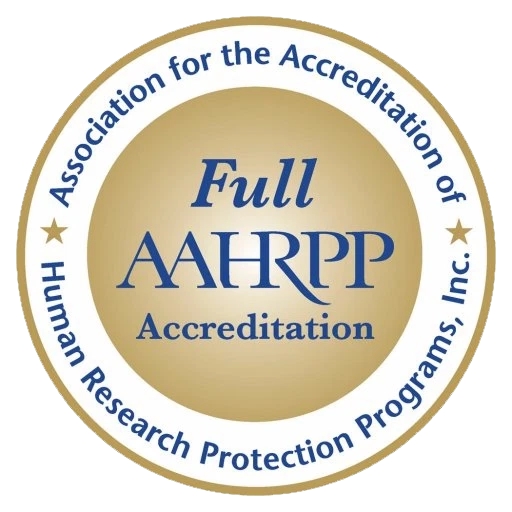Streamlining Multi-site Research: The Role of an sIRB
It’s more important than ever for research teams to become more efficient all while meeting tight deadlines and getting a new medicine or therapy to market. In one effort to do so, many governing bodies, such as National Institutes of Health (NIH) and Food and Drug Administration (FDA), are pushing for the use of a single institutional review board (single IRB) to streamline review efforts.
What is an sIRB?
A single IRB, also known as an sIRB, is an institutional review board primarily serving multi-site studies. Rather than many different sites working with their respective local IRBs to gain approval, an sIRB is a centralized review board designed to provide IRB review and oversight for all sites involved in a singular study.
sIRBs have the same mission as local IRBs: keep human subject protections in the forefront at all times. It’s of utmost importance for these review boards to uphold ethical and safety standards so participants are protected as they move through a clinical trial. Since single IRBs are offering a more centralized approach, working with one may eliminate the need to work with any number of local IRBs.
Central vs. Single IRBs
It’s common to use jargon and acronyms in clinical research – for instance, the term “central IRB” may be used when talking about an IRB. How does that differ from a single IRB?
Essentially, central IRBs and single IRBs are one in the same, and the terms are often used interchangeably. Generally speaking, if someone mentions “central IRB review”, they’re using it synonymously with “single IRB review.” However, the term central IRB has also been used to describe IRBs that sit outside of hospital or university settings, like Sabai IRB. These “independent” IRBs can serve as an IRB for a single site’s study as well as the sIRB for multi-site studies, facilitating sIRB processes across institutions.
The sIRB Review Process
Although local IRBs and sIRBs differ in what types of studies they serve, the sIRB review process is essentially the same as a local IRB’s. This includes:
- Study submission: The study’s sponsor or contract research organization (CRO) will submit the protocol.
- Review process: The sIRB will evaluate the protocol against ethical considerations, participant safety and regulatory compliance.
- Suggesting revisions or giving approval: From here, the sIRB will either approve the study outright, turn back the protocol/study materials for revisions or deny the study.
- Ongoing monitoring: Throughout the study, the sIRB will monitor everything to ensure researchers are staying compliant and participants are protected throughout the trial.
sIRBs and Multi-site Studies
Since an sIRB centralizes review, they are especially beneficial for multi-site studies. Currently, any NIH and federally-funded studies falling under the Common Rule are already required to use an sIRB. The FDA also has released a notice of proposed rulemaking, in preparation for similar mandates requiring FDA-funded studies to use an sIRB rather than local IRBs.
The reason sIRBs are so beneficial for multi-site studies is because the central or single IRB will do the study-level and protocol review one time, and all participating sites can subsequently turn in an abbreviated site application to obtain IRB approval to conduct the study. These abbreviated applications focus on the sites’ unique investigator and site qualifications, site-specific informed consent form (ICF) and local considerations.
In the traditional, local IRB model, this entire IRB review process and oversight would have to be repeated for every site involved in the study. For example, if there were 10 sites involved in a multi-site study, under a local IRB review process, each site would have to repeat the process of submitting the full protocol and IRB application instead of just the site’s unique information, subsequently creating duplicate review. The sIRB review process benefits sponsors and CROs by streamlining communication and oversight. Through this process, they can engage with a single IRB rather than coordinating with multiple IRBs across participating sites.
Advantages to Using an sIRB
Even though sIRBs provide the same review as local IRBs, and it’s beneficial for sponsors and CROs to engage with an sIRB, there are several other advantages to working with a single IRB.
- Reduced administrative burden: An sIRB provides centralized management, meaning everything is accessible from one point. This can include reviews, protocol amendments, event reporting and more.
- Efficiency: For multi-site studies especially, sIRBs improve efficiency because there is one point for approval for all sites. This reduces the possibility of delays due to not receiving approvals from local IRBs in a timely manner.
- Consistency: Since there’s only one source of approval, sIRBs can ensure the same ethical standards are upheld across all sites, no matter where they are. This eliminates something sliding at one site but not another.
- Cost savings: Making IRB reviews more efficient and consistent through an sIRB will help sites and sponsors reduce trial costs because there will be less effort duplication.
Common sIRB Misconceptions
Although using an sIRB is becoming more standard practice, there are still common misconceptions about sIRBs, who they are for and how they function.
One misconception is they are only for large multi-site trials. While sIRBs best serve multi-site trials, they aren’t limited to just large trials. They are also effective for smaller, multi-site studies. As mentioned earlier, the point of an sIRB is to eliminate redundancies for reviewing multi-site studies and to streamline efficiencies for sponsors and CROs. This can happen no matter the size of the multi-site study.
Another common misconception is an sIRB removing all local oversight. While sIRBs take away the burden of multi-sites relying on local IRB review, it doesn’t mean sites can’t still engage with local IRBs for support. For many sites and studies, it makes sense to let an sIRB handle regulatory review, and to use a local IRB to help with compliance and quality matters.
Lastly, it’s commonly assumed sIRBs are always going to give a faster review. While sIRBs are designed to streamline the process because they are one point of contact providing oversight, that doesn’t lead to a faster review. sIRB panels still need to provide thorough reviews, and keep the participants’ safety and health at the forefront.
However, using an sIRB can streamline the review process because sites are going through one review board, rather than many different local ones. While this tends to naturally make the process faster, it’s not always the case. The goal with sIRBs, like local IRBs, is to ensure the rights, safety and welfare of participants is protected at all times – something that will never be compromised, even if the process is more efficient.
Partner With Sabai For Your Central IRB Needs
Sabai is an Association for the Accreditation of Human Research Protection Programs (AAHRPP)-accredited central IRB that offers ethical review services and delivers protection and oversight for participants involved in clinical research, with strong capabilities in reviewing as an sIRB of multi-site trials. Our goal is to foster safe, ethical and compliant clinical trials. Partner with us today as we continue to advance therapies and medicine.



